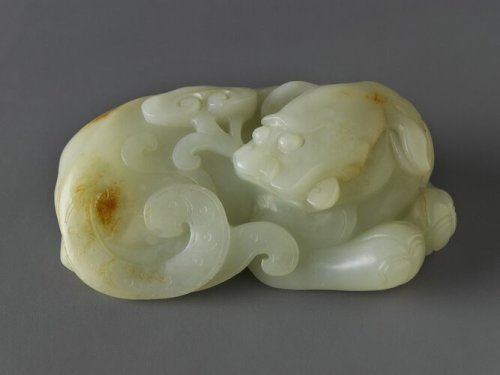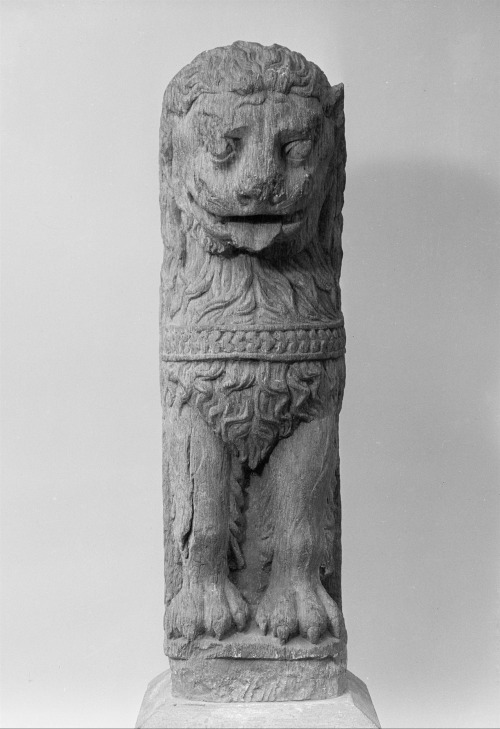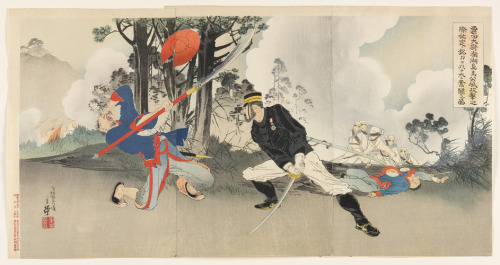#asianart
Abstract Landscape, Liu Kuo-Sung, 1967,Brooklyn Museum: Asian Art
© Liu Kuo-sung
Size: 73 ½ x 27 ½ in. (186.7 x 69.9 cm) Image: 35 7/8 x 23 5/8 in. (91.1 x 60 cm)
Medium: Hanging scroll, painting and collage, ink and color on paper
https://www.brooklynmuseum.org/opencollection/objects/103461
Post link
Long Straight Prayer Stick,Brooklyn Museum: Asian Art
Size: 1 x 11 15/16 in. (2.5 x 30.3 cm)
Medium: Wood
https://www.brooklynmuseum.org/opencollection/objects/6030
Post link
Tea Bowl, late 18th-early 19th century,Brooklyn Museum: Asian Art
Size: 3 x 4 ½ in. (7.6 x 11.4 cm)
Medium: Glazed earthenware: Raku ware
https://www.brooklynmuseum.org/opencollection/objects/114749
Post link
Carving of a Recumbent Mythical Beast, late 18th-early 19th century,Brooklyn Museum: Asian Art
Size: 1 3/8 x 3 ½ in. (3.5 x 8.9 cm)
Medium: Nephrite
https://www.brooklynmuseum.org/opencollection/objects/104147
Post link
Ritual Bell, 13th-15th century,Brooklyn Museum: Asian Art
Size: 5 ½ x 2 ¾ in. (14 x 7 cm)
Medium: Bronze
https://www.brooklynmuseum.org/opencollection/objects/112208
Post link
Landscape Scene with Retreat, Tani Buncho, 1795,Brooklyn Museum: Asian Art
Inscription in upper right corner. Mounted on gold-colored silk, this painting depicts a landscape scene in which a man, in lower portion, stands near a shrine. The painting is done in black ink with washes of red to emphasize the area where the man is standing.
Size: Image: 43 1/16 x 11 3/8 in. (109.4 x 28.9 cm) 76 3/8 x 18 in. (194 x 45.7 cm)
Medium: Hanging scroll, ink with color on paper
https://www.brooklynmuseum.org/opencollection/objects/94977
Post link
The Ceremonial Cave, Urushibara Mokuchu, 20th century,Brooklyn Museum: Asian Art
Size: 13 5/8 x 10 1/8 in. (34.6 x 25.7 cm)
Medium: Color etching
https://www.brooklynmuseum.org/opencollection/objects/110931
Post link

Yin is dark, cold, receptive, magnetic.
Yang is light, hot, giving, active.
Both are present in everything. Day is Yang, Night is Yin. But during a Yang day, one will have periods of Yin rest.
Yin-Yang is also an important concept in Japanese art. In the calligraphy above, outward brush-strokes are Yang and should be painted freely. Inward brush-strokes are Yin, and should be painted tightly.
Even in as mundane an activity as cooking, one finds Yin-Yang. In Japanese cooking, there are Yang knives which are used blade-outwards, and Yin knives which are used blade-inwards. Yin-Yang also applies to the ingredients. The leaves of a plant are Yin, but the roots of a plant are Yang. As with everything, a good balance is necessary.
In the image above I intended to make the “yang” round like the sun. It also resembles an “enso”, a hand-drawn circle which in Buddhism signifies the circle of life.

It is precisely the act of pushing against limits, stretching them, bending them, playing with them, which leads to interesting artistic expression.
In other words, in order to push boundaries, there have to be boundaries there in the first place.
This is very true of Japanese calligraphy. As an artform it is incredibly restrictive. The boundaries are clear and unequivocal… so it’s all the more impressive when a calligraphy artist successfully transcends the boundaries, expressing Japanese characters in a unique and moving way.
Ritual Bell, 13th-15th century,Brooklyn Museum: Asian Art
Size: 5 ½ x 2 ¾ in. (14 x 7 cm)
Medium: Bronzehttps://www.brooklynmuseum.org/opencollection/objects/112208
Post link
Graffiti on a Storehouse Wall, Utagawa Kuniyoshi, 1847,Brooklyn Museum: Asian Art
Central page from the triptych known as “Scribblings on the Storehouse Wall” (Nitakaragura kabe no mudagaki). Vertical oban-sized print depicting a wall covered with graffiti, mostly consisting of thinly disguised portraits of well-known actors in celebrated roles. At the center is the figure of a dancing cat. This is the central page of a triptych, one of several groups (2 triptychs and 1 diptych, plus an homage by Kunichika that references the work of Kuniyoshi) of graffiti images that the artist made following new censorship laws that forbade the representation of actors. The Japanese title, Nitakaragura, is a pun, as it sounds like the phrase “nita kara,” meaning “don’t they resemble them?” The “dancing cat” triptych, as this group is known, differs from the other triptych in its inclusion of the lower section of the wall, with its less artistic scribblings. The actors have been identified, running clockwise from the top center: - Ichimura Uzaemon XII in the role of Tsukimoto Inaba Kosuke, in the play Onoe Baiju Ichidai Banasi - Matsumoto Koshiro VI in the role of Yokogawa Kakuha in Yoshitsune senbon sakura - Nakamura Utaemon IV in the role of Sato Tadanobu Kakuha in Yoshitsune senbon sakura - Bando Shuka - Sawamura Ujuro Jagatara Sanzo in the play Sawamura ski hakata no hanabishi - Ichikawa Shinsha Th publisher for this series is Iba-ya Sensaburo.
Size: approx.: 10 × 15 in. (25.4 × 38.1 cm)
Medium: Color woodblock print on paperhttps://www.brooklynmuseum.org/opencollection/objects/223083
Post link
Landscape after Li Cheng, Unidentified Artist, 18th century or later, spurious date of 1680,Metropolitan Museum of Art: Asian Art
John Stewart Kennedy Fund, 1913
Size: 14 ½ x 11 1/8 in. (36.8 x 28.3 cm)
Medium: Hanging scroll; ink on silk
Post link
Lion, 2nd–3rd century,Metropolitan Museum of Art: Asian Art
Purchase, 1932
Size: H. 19 ½ in. ( 49.5 cm)
Medium: Schist
Post link
Netsuke Depicting Ebisu and Fish, Masatomo, 19th century,Brooklyn Museum: Asian Art
Size: 1 3/8 x 1 1/8 in. (3.5 x 2.8 cm)
Medium: Ivoryhttps://www.brooklynmuseum.org/opencollection/objects/100607
Post link
Carving of a Recumbent Mythical Beast, late 18th-early 19th century,Brooklyn Museum: Asian Art
Size: 1 3/8 x 3 ½ in. (3.5 x 8.9 cm)
Medium: Nephritehttps://www.brooklynmuseum.org/opencollection/objects/104147
Post link
Hanging, 1 of 7 Pieces, 1610-1640,Brooklyn Museum: Asian Art
Size: 109 ¼ x 38 ½ in. (277.5 x 97.8 cm)
Medium: Cotton, drawn and painted resist and mordants, dyedhttps://www.brooklynmuseum.org/opencollection/objects/139338
Post link
Captain Kurita, Who Fought Furiously with His Famous…, Migita Toshihide, 1895,Saint Louis Art Museum: Asian Art
Post link






Minamoto no Raikou cosplay




















